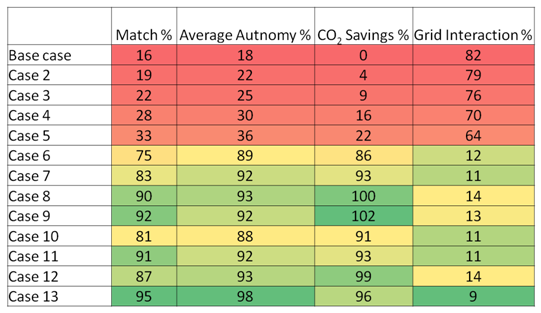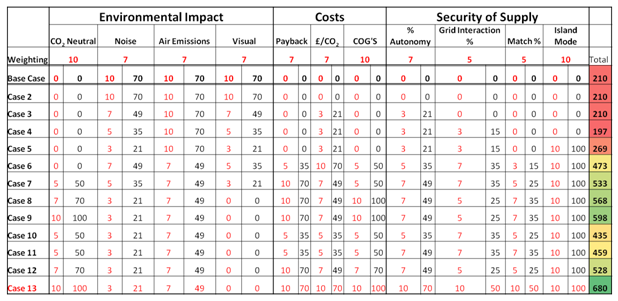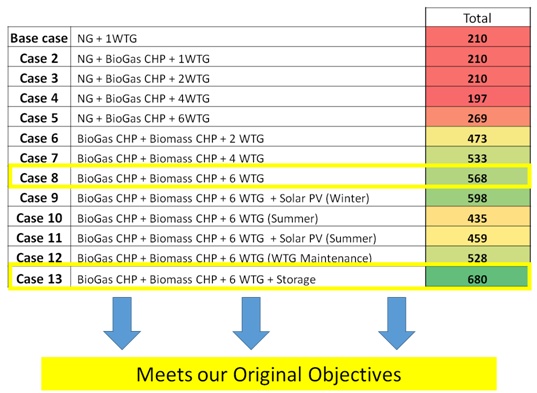Project Outcomes and Conclusions
The table below shows results obtained from the investigation carried out for each respective matrix. A red colouration indicates a poor result however a green colouration represents a good result.

Scoring Matrices
In order to investigate which cases gives us the best results for different scoring criteria, we have come up with a few scoring matrices. These scoring matrices addresses the issues related to environmental impact, costs and security of supply.
Under the environmental impact matrix, achieving CO2 neutrality, noise, air emission and visual impact is taken into account. As for the costs matrix, aspects such as the number of payback years, money savings per tonne of CO2 saved and the overall cost of goods are taken into consideration. For our security of supply matrix, percentage autonomy, percentage grid interaction, percentage match and ability to go on islanding mode is investigated.
The final scoring matrix combines the results obtained from the technical, environmental and economic assessments. This can be seen in the table below.

The table above represents the results from the metrics obtained from our results. This assessment matrix is again available for the other people to use and modify. The outcomes and metrics used, represent and match the objectives for our project. The assessment matrix works on a scoring system which can be seen in the small table above. Each metric within the table can be weighted at different levels to represent the most important metrics for each project. For example, you can see that Cost of Goods and CO2 neutral are the most important factors in our analysis.
The table below shows the score/colour score for the assessment matrix under each respected case. As shown below Case 8 and Case 13 meets our original objectives and it is therefore important that the site implements some of these renewable technologies. The table also shows that Case 9 has a higher overall score with regard to the metrics, however it was deemed unneccessary as the key objectives where already achieved by following case 8. Overall, Case 13 gives an enhanced benefit with respect to the key objectives; autonomy on site. Case 13 implements all renewable technologies (except PV) with energy storage, and therefore would also reduce grid interaction and maximise the use of renewable power onsite.
